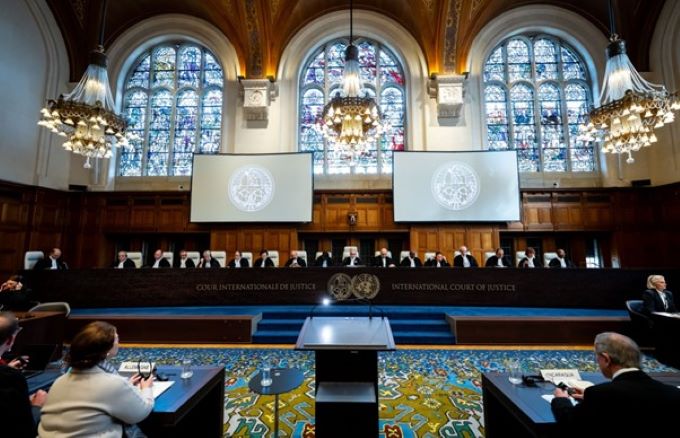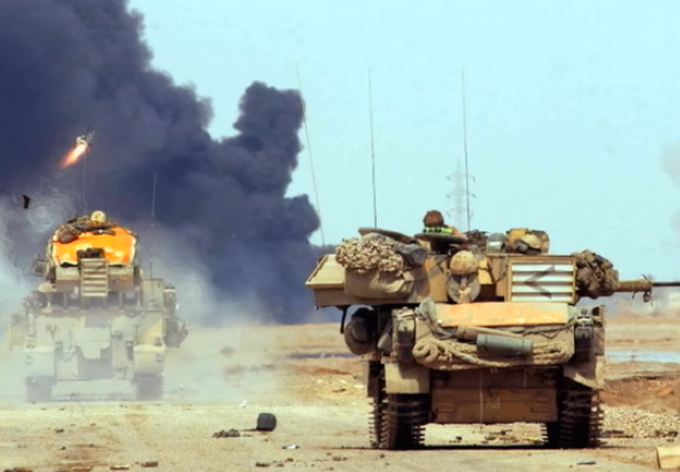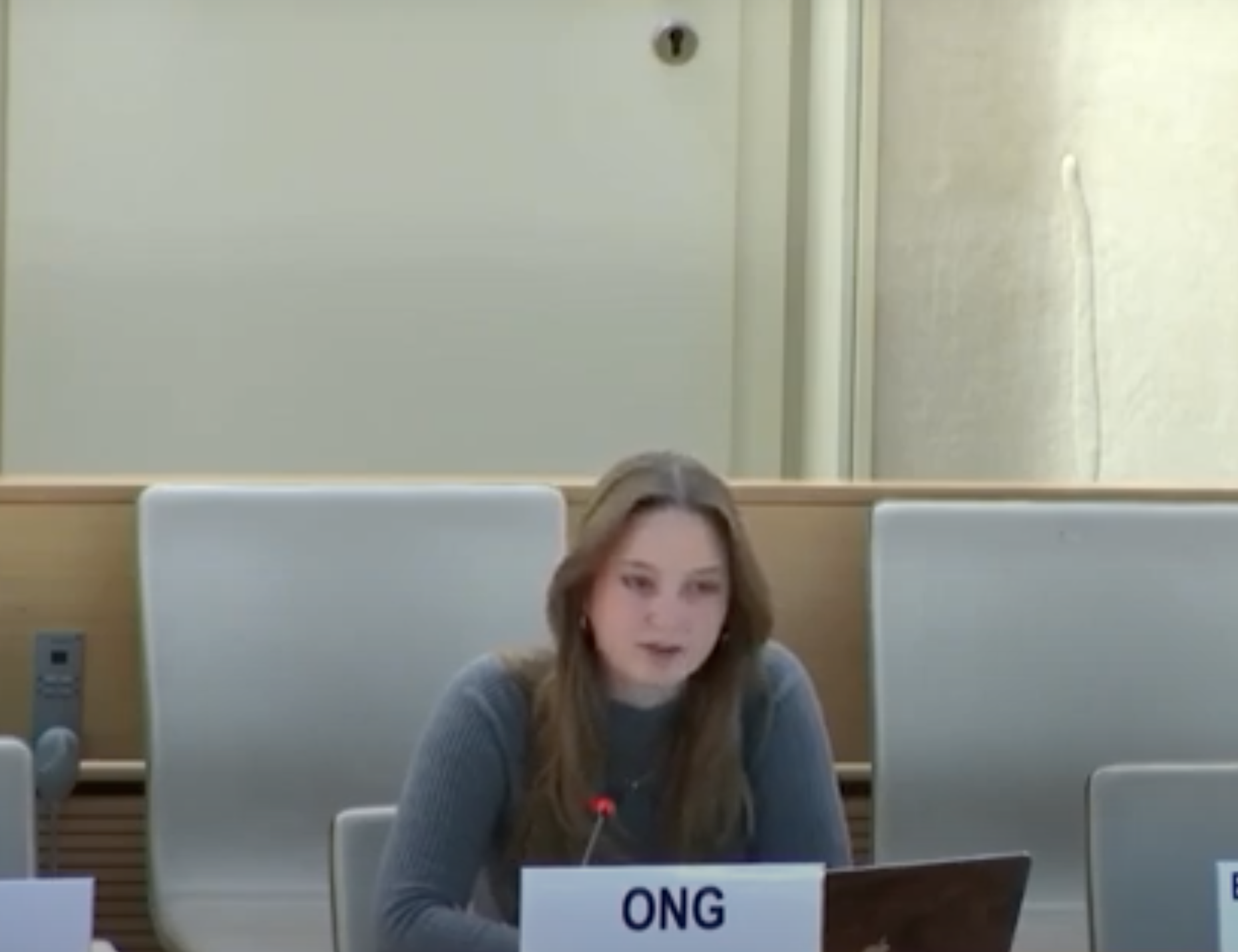19 June 2019
By: Giorgia Airoldi

Introduction
A lot of terminology is indiscriminately used while referring to the refugee issue and this contributes to creating confusion and false perceptions. With the so-called “refugee crisis” at the centre of most political debates, news programmes and social media discussions, it is now more than ever important to clarify the meaning of terms. Refugee, internally displaced person, asylum seeker and illegal migrant are not synonymous, and the distinction is crucial since it results in a different legal treatment as well as the recognition of different rights.
In addition, a lot of misconceptions exist around the question: “Where do refugees come from and which are the top host refugee countries?” There is confusion around the real reasons for the displacement of people around the globe as well as unawareness around the real challenges that refugees have to face. For a comprehensive understanding of the refugee issue, it is finally important to clarify the role and mandate of international actors entrusted with the protection of refugees.
Therefore, the aim of this article is to examine and discuss the main aspects of the refugee issue, with the aim of achieving a better understanding and raising awareness of this field.

WHO is a refugee?
The term migrant refers to those people that are moving from one place to another, whether across an international border or within a State, away from his or her habitual place of residence. The definition does not place importance on (1) the person’s legal status; (2) whether the movement is voluntary or involuntary; (3) the causes for the movement; or (4) the length of stay. Therefore, the term migrant can be used as an umbrella term that includes refugees.[1]
Within the broad category of migrants, a distinction is made between regular migrants and irregular migrants. Irregular migration[2] is when the movement takes place outside the regulatory norms of the country. An irregular migrant is therefore someone who entered or stayed in a country without the necessary authorisation or documents required under immigration regulations. By contrast, a regular migrant is someone that has the required documents to enter and stay in a country. The overwhelming majority of the world’s migrants arrive to their host country in a regular manner and only later become ‘irregular’ due to administrative overstay.
Internally displaced persons (IDPs) are persons who have been forced or obliged to flee or to leave their homes or places of habitual residence. However, IDPs have not crossed an internationally recognized State border. There is no special legal status for IDPs, since they remain in their country of origin under the protection of that government. The reasons of leaving might be various: armed conflict, situations of generalized violence, violations of human rights or natural or humanmade disasters.
A refugee is someone who had to flee from his or her country of origin due to a well-founded fear of being persecuted on certain grounds (such as race, religion, nationality, membership of a particular social group or political opinion) and is unable or unwilling to seek protection from the State of origin[3]. These people are entitled to be granted “refugee status” in a host country, a formal determination that declares that an individual is a refugee. However, the refugee definition does not cover every situation where a person is escaping from a dangerous situation, only when the person fears “persecution.” For example, someone cannot be considered a refugee if he has left his country due to natural disasters, climate change, extreme poverty, domestic violence epidemics or health conditions because these situations are not examples of persecution.
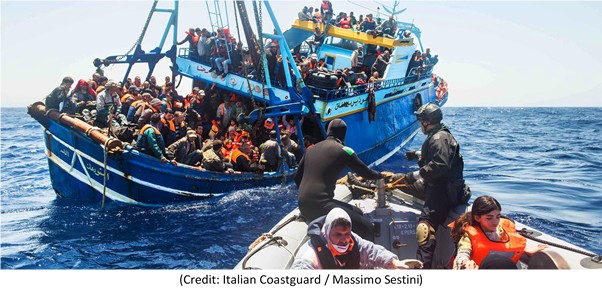
The term asylum seeker is related to the process of determining “refugee status”. An asylum seeker is anyone who is seeking refugee status but who has not yet had a claim settled by a host country. As a result, every refugee starts out as an asylum seeker, but not every asylum seeker will end up being formally granted refugee status.
Although there are cases where the difference is blurred, refugees, migrants, IDPs and asylum seekers are different concepts and using the right terminology does matter because each category is entitled to different rights. Most significantly, refugees are specifically defined and protected by several provisions under international law, primarily the 1951 Refugee Convention, which covers such issues as a refugee’s right not to be returned to the country of origin.
HOW MANY and WHERE?
Misconceptions affect a lot of different issues related to migration and refugee flows, such as the quantitative impact of refugees’ arrivals, the size of irregular migration, refugees’ country of origin as well as the main host countries for refugees. In Europe, there is a general impression that a real refugee invasion is occurring. This perception comes from the incendiary views depicted by media and politicians, describing the refugee phenomenon as a serious threat to those societies.
In actuality, the real size and impact of migration and refugee flows are very different from the picture that is typically depicted in the Western countries. Refugees constitute just 10 per cent of the total population of migrants across the world, and even among migrants, the vast majority of them are regular ones.
It is a common belief that the majority of refugees are hosted in developed countries, such as European countries or the US. However, 85% of refugees are actually hosted in developing countries. Turkey, Uganda, Pakistan, Lebanon and Iran are the top refugee-hosting countries. To get an idea of the proportions, by the middle of 2018, Turkey hosted 3.6 million refugees while the rest of Europe hosted about 2.7 million[4]. Regarding the country of origin, it is estimated that 57% of refugees worldwide are coming from just three countries: Syria, Afghanistan and South Sudan.
WHY are refugees fleeing their countries?
There are many reasons why a person becomes a refugee. In addition to the most obvious ones, such as war and armed conflict, refugees are sometimes escaping from a religious persecution, such as the Rohingya Muslim people in Myanmar who are persecuted by the military and local Buddhist extremists. In other cases, refugees are leaving their country due to political persecution related to the opinions they hold or the opinions that their persecutors falsely impute to them. Persecution can also be based on sexual orientation: if an individual is able to demonstrate serious violations of human rights on account of sexual orientation or gender identity, such acts may amount to “persecution”.
There are cases where forced migration is generated by climate change or natural disasters. However, these situations are not considered grounds to grant refugee status: “climate refugees” do not exist under international law. The Global Compact on Refugees, adopted by the UN General Assembly in December 2018, directly addresses this global growing concern. It acknowledges that “climate, environmental degradation and natural disasters increasingly interact with the drivers of refugee movements”[5].
In some regional contexts, however, the definition of refugee is broader. In Africa for example, the definition of refugees extends to persons fleeing “events seriously disturbing public order”, a very broad category that can also encompass climate change, natural disasters, epidemics, generalized violence and other situations. Although the 1969 OAU Convention Governing the Specific Aspects of Refugee Problems in Africa is the oldest regional instrument of refugee protection, it is very innovative because it offers legal protection to a wider category of people.

WHAT challenges do refugees have to face?
Having already faced the hardship of fleeing their homes, refugees subsequently face the threat of attacks and violence by armed groups and in camps. Women are at especially high risk for sexual harassment, violence and human trafficking. Other challenges relate to the places where refugee camps are hosted. For example, in June 2018, monsoon conditions with heavy rains led to landslides, water logging, lightning strikes and heavy winds in Cox’s Bazar, Bangladesh, where one million Rohingya refugees are sheltered in camps. These types of risks are exacerbated when refugees are hosted in developing countries that do not have the resources to provide the necessary aid to large numbers of refugees.
Another challenge faced by refugees is reaching the destination country. Sometimes geography presents a major challenge. For example, many refugees risk crossing the Mediterranean Sea to get to Europe, mainly Greece and Italy. Refugee boats are often overcrowded and in poor condition. For example, on 6 June 2018, around 46 Ethiopians drowned as their boat was approaching Yemen. Sometimes refugees face financial, legal or social obstacles. There are thousands of people who try to cross borders with the help of smugglers and risk their lives. Many refugees face physical and sexual abuse by the smugglers who help them leave or enter a country. Even after successfully reaching a host country, refugees can face racial discrimination and xenophobic attitudes when trying to settle in their new communities.
WHO is protecting refugees?
 The most well-known UN agency in charge of refugees, the United Nations High Commissioner for Refugees (UNHCR), is not the only one with a protection mandate over refugees. The United Nations Relief and Works Agency for Palestinian Refugees in the Near East (UNRWA) is solely responsible for Palestinian refugees, while UNHCR is responsible for all other refugees around the world.
The most well-known UN agency in charge of refugees, the United Nations High Commissioner for Refugees (UNHCR), is not the only one with a protection mandate over refugees. The United Nations Relief and Works Agency for Palestinian Refugees in the Near East (UNRWA) is solely responsible for Palestinian refugees, while UNHCR is responsible for all other refugees around the world.
After World War II, Europe witnessed the most catastrophic refugee crisis of the 20th century with millions fleeing from their homelands. As a result, the UNHCR was established in 1950 to provide assistance to millions of European refugees and internally displaced persons. A year later, the United Nations Convention on the Status of Refugees was adopted in 1951 (1951 Refugee Convention) based on the Universal Declaration of Human Rights of 1948. The Convention came into force on 22 April 1954. The 1951 Refugee Convention was limited only to Europe until the 1967 Additional Protocol was adopted which made the Convention universal.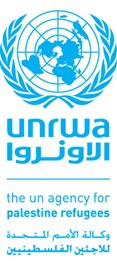
UNRWA was created before the enactment of the 1951 Geneva Convention and before the establishment of UNHCR, in order to provide temporary support, through works and relief programmes, to those people who were displaced as a consequence of the Arab-Israeli Conflict of 1948. However, since a just and durable solution to the issue of Palestinian Refugees has not been reached yet, UNRWA’s mandate has been repeatedly renewed by the UN General Assembly.
While UNHCR is operating in 127 countries worldwide, UNRWA’s area of operation is limited to the Middle East region, specifically in 5 different geographic areas: the West Bank, the Gaza Strip, Lebanon, Syria and Jordan.

UNRWA’s role encompasses assistance (health and psychological support, education, camp and infrastructure improvement, microfinance), protection and global advocacy for Palestinian refugees. UNHCR’s mandate is to protect, assist (health and shelter) and seek durable solutions for refugees as well as for other people in need of international protection. UNHCR is responsible for Palestinian refugees outside UNRWA's areas of operation.

WHAT is the international community doing?
On 17 December 2018 the United Nations General Assembly adopted the Global Compact on Refugees, a framework promoting cooperation at the international level to address the challenges posed by the refugee phenomenon. The framework was developed through a process involving meetings and consultations between UNHCR and States, that lasted for 2 years.
The Global Compact on Refugees acknowledges that the world’s response to large-scale movements remains inadequate and underfunded. Hence, it aims to promote an equitable sharing of responsibility, ensuring that host communities get the support needed. It is also aimed at enhancing refugee self-reliance.
The Global Compact includes the Comprehensive Refugee Response Framework that identifies as a key element the inclusion and integration of refugees in host communities from the beginning. The goal is to help refugees thrive, not just survive, through the recognition of the right to education and the right to work.
The Global Compact also adopted a Program of Action, in order to facilitate the application of a comprehensive response in support to refugees and countries particularly affected by a large refugee movement, or a protracted refugee situation. To support this, the Compact established a periodic Global Refugee Forum to include state representatives at the ministerial level. This will be convened for all United Nations Member States, together with relevant stakeholders, to announce concrete pledges and contributions towards the objectives of the Global Compact. In addition, the Compact included national and regional arrangements for specific situations, and tools for funding, partnerships and data gathering.
Conclusion
Understanding all the different aspects of the refugee issue is important in order to avoid confusion and false perceptions. This is particularly true in an era when the refugee problem is more than ever in the spotlight of media and politicians. Misconceptions lead to discriminatory behaviours by the population of host countries, which might give raise to racism and a general climate of hatred. The situation can then lead to public policies promoting discrimination and exclusion.
Refugee, internally displaced person, asylum seeker and migrant cannot be used interchangeably because they are related with the recognition of different rights and the applicability of different legal standards. The vast majority of refugees are hosted in developing countries and not in the Western world, which underlines that the image of an invasion of refugees in Europe and US is totally inaccurate. Refugees are fleeing persecution resulting from different situations in their countries of origin, such as armed conflict, and targeted violations of group or individual human rights or natural or humanmade disasters. They also face many challenges after leaving their country. They are frequently subjected to attacks and violence by armed groups and in camps, especially women who are at high risk for sexual harassment, violence and human trafficking. They undertake extremely dangerous journeys, across deserts, seas and mountains, often facing captivity, torture, slavery, rape and other inhumane treatments.
Refugees are protected and assisted by two different UN Agencies, namely UNHCR and UNRWA, which provide them with essential services such as food, healthcare, shelter and education. However, refugees need the understanding, help and support of us all to become an integral part of our communities.
* * *
[1] There is no official definition of the term “migrant” at the international level, but most experts and IOM use this definition. IOM, Key migration terms, https://www.iom.int/key-migration-terms. However, in some cases, migrants are considered to be only those people that left their places of origin for reasons other than a direct threat of persecution (such as improving their living conditions, escaping from poverty, family reunion, etc.).
[2] There is no universally accepted definition of irregular migration.
[3] The refugee definition is included into the 1951 Refugee Convention: those who fulfil this definition are entitled to the rights and bound by the duties contained in the Convention.
[4] UNHCR, Mid-Year Trends, 2018, https://www.unhcr.org/statistics/unhcrstats/5c52ea084/mid-year-trends-2018.html
[5] https://www.unhcr.org/protection/environment/5c9e13297/climate-change-disaster-displacement-global-compact-refugees.html
|
Download the full report. |





